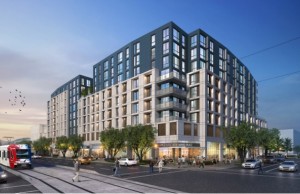Sales of new homes nationally tumbled in June by the largest amount in five months, helping provoke the new worries on Wall Street about just how much the overall economy will be harmed by a prolonged housing slump.
Even in Utah, where the market until recently had outpaced much of the rest of the nation, new home construction is slowing. Along the Wasatch Front in June, builders took out only 992 for the construction of new homes, down sharply from 1,240 in May and 1,728 in June 2006.
The fall in new home sales was just the latest piece of evidence this week of housing’s troubles. Sales in the much larger existing home market also fell in June, dropping by 3.8 percent to an annual rate of 5.75 million units, the slowest pace in nearly five years.
Also this week, Countrywide Financial, which issues one in five mortgages nationwide, reported a sharp drop in second-quarter profits, saying that rising default rates were spreading from subprime to more conventional mortgages.
The wave of negative developments helped trigger Thursday’s, 26 July, bloodbath on Wall Street, with plunges in the Dow and other indexes. Asked about the market turmoil, Treasury Secretary Henry Paulson said it showed investors were reassessing the risks involved in credit markets.
The Commerce Department reported that sales of new single-family homes dropped by 6.6 percent nationally last month, to a seasonally adjusted annual rate of 834,000 units. The decline was more than triple what had been expected and was the largest percentage drop since sales fell by 12.7 percent in January.
Analysts blamed increases in mortgage rates in June for pushing home sales lower. ”Home builders continue to trim prices and offer large non-price sales incentives, but many prospective home buyers obviously are reluctant to sign on the bottom line,” said David Seiders, chief economist at the National Association of Home Builders.
Sales of new homes are now 22.3 percent below where they were a year ago. Analysts said this slide is likely to continue because of spreading mortgage defaults as borrowers are not able to meet higher payments as their adjustable-rate mortgages reset at higher rates.



